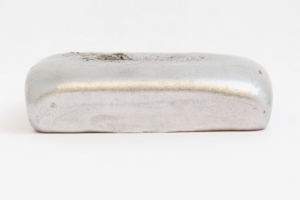
Create a selection
This “slug” of cast aluminium is created by heating the material above its 660°C melting point and then pouring the molten metal into a patterned mould; the metal flows to fill the pattern – in this case a simple rectangular shape – and is then left to gradually cool from a liquid into a solid, retaining the shape of the mould. A range of more complicated parts can be generated in this way since the final shape of the casting will mirror that of the container into which it was poured.
The casting of metal is traditionally performed in a foundry, some of the most famous of which have historically been located in the Sheffield area of England, where, during the industries peak in the 1800s, thousands of immigrant workers flocked to the north of England, lured by the promise of work. Back then, this type of labour was extremely hazardous, especially given the large volumes of molten metal being sloshed around. The metal casting of today is a highly-refined practice, however, with companies investing millions of pounds to understand the intricate science that underpins the process, enabling the casting of more complex shapes and with improved quality.
Sample ID: 141
Add materials you find interesting to your own selections.
Use the  button to select a material and get started.
button to select a material and get started.



